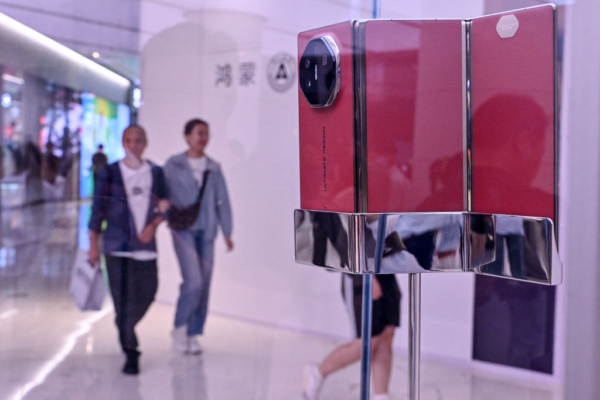On Monday, September 9th, Apple unveiled the new iPhone 16 model. Shortly after, Huawei introduced a three-fold screen phone in what looked like an attempt to steal some of the iPhone’s spotlight. However, analysts suggest that Huawei’s three-fold screen phone has weaknesses that are unlikely to significantly impact the iPhone market.
Following Apple’s product launch event on Monday, Huawei held its own launch event in China, unveiling the Mate XT, a three-fold smart phone. Canalys research manager, Amber Liu, told CNN, “The close proximity of product releases from Huawei and Apple marks the beginning of a new wave of competition in China’s high-end smartphone market.” She added that key areas of competition would include high-end products, software features, and artificial intelligence deployments.
The following day, Martin Yang, senior analyst for Oppenheimer & Co., spoke with CNBC’s “Squawk Box Asia” and highlighted Huawei’s chip capabilities as a weakness. He noted that the technological gap between Huawei and Apple in terms of System-on-Chip (SoC) is widening, as Huawei still cannot utilize any processes below 7 nanometers.
In chip manufacturing, nanometers represent the size of transistors on a processor. The smaller the transistor size, the more transistors can fit on a chip, leading to increased chip sophistication.
Last year, Huawei released the Mate 50 with a chip claimed to be 7 nanometers, but as of Monday, no significant breakthrough in chip technology for the Mate XT has been announced by Huawei.
Meanwhile, Yang stated that Apple is currently using second-generation 3-nanometer technology, with this year’s performance enhancement reaching 10-15% over last year’s first-generation 3-nanometer technology.
Apple announced a completely new A18 processor designed for the iPhone 16, utilizing second-generation 3-nanometer technology and four efficiency cores, making the CPU 60% faster than that of the iPhone 12, challenging high-end desktop computers. Additionally, the GPU on the iPhone 16 outperforms the one on the iPhone 15 by 40%.
Huawei announced on Monday that pre-orders for the foldable Mate XT would begin on September 7th. According to Huawei’s website, as of Tuesday, pre-orders for this phone had exceeded 3.5 million units.
Analysts suggest that the success of this phone release will partly depend on its pricing and availability. Liu believes that actual sales figures may fall below the pre-order numbers due to these factors.
Yang also told CNN that despite substantial pre-orders for last year’s Mate 60 RS from Huawei, the actual sales did not match. “I don’t think the actual shipments will reach around 3 million units,” he said.
According to The Wall Street Journal, analysts indicate that the starting price of the Mate XT is approximately $2,800, while the iPhone 16 starts at around $843 in China, possibly making Huawei’s phone less attractive to consumers. Additionally, analysts state that Huawei still faces manufacturing bottlenecks, which could result in shipping delays.
IDC senior research analyst Will Wong said, “Production constraints and high prices indicate that the new Huawei phone may not have a huge impact on the shipment volume of the iPhone 16.” However, he noted that it signals to consumers that Huawei continues to be a technology leader.
On Tuesday, Navkendar Singh, an analyst at International Data Corporation, in an interview with CNBC’s “Street Signs Asia,” mentioned that despite Huawei’s dominance in sales of foldable smartphones, the market remains niche due to consumer concerns about price and functionality.
IDC reported that foldable smartphones shipped 3.9 million units in the second quarter, accounting for 1.3% of the overall smartphone market, with total smartphone shipments in the quarter reaching 292.2 million units.
Bloomberg reported that IDC analyst Arthur Guo stated before Huawei’s launch event, “Given the high technical requirements, low production volumes, high prices, and limited participants, it’s challenging for tri-fold products to become the main growth engine in the foldable market.”
He added that other smartphone manufacturers are beginning to slow down their investment in foldable products, waiting for Apple to enter the competition and leverage its “strong appeal” to attract consumers to purchase such devices.

